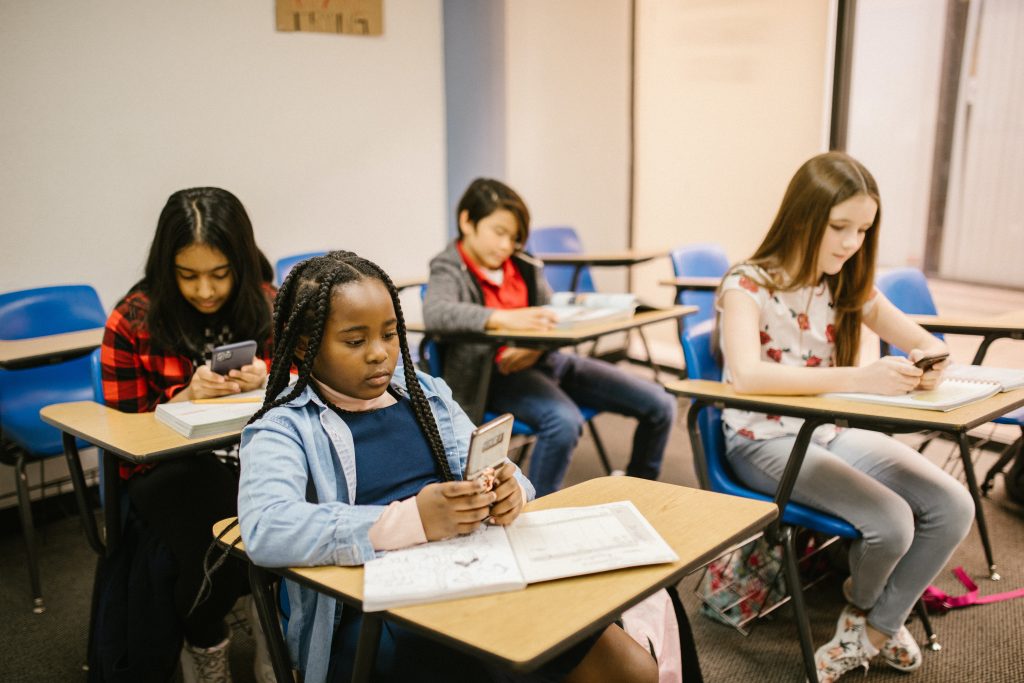With kids back to school, parents can breathe a sigh of relief. But school does come with its own set of challenges, for instance bullying. While the traditional image of bullying is probably one of a bigger-sized kid cornering a smaller kid and threatening physical violence, that image is much less relevant in our modern day and age. Bullying is so much more unseen these days that it can be hard to detect in our kids’ lives, so we must be highly tuned in to our children’s mental, emotional and physical state in order to discover it.

An earlier jingkids article identified different forms of bullying, which can be largely categorized into these 4:
Verbal Bullying
What It Is: Verbal bullying, or bullying with cruel spoken words, involves ongoing name-calling, threatening, and making disrespectful comments about someone’s attributes (appearance, religion, ethnicity, disability, sexual orientation, etc.).
Physical Bullying
What It Is: Physical bullying, or bullying with aggressive physical intimidation, involves repeated hitting, kicking, tripping, blocking, pushing, and touching in unwanted and inappropriate ways.
Relational Bullying
What It Is: Relational bullying, or bullying with exclusionary tactics, involves deliberately preventing someone from joining or being part of a group, whether it’s at a lunch table, game, sport, or social activity.
Cyberbullying
What It Is: Cyberbullying, or bullying in cyberspace, involves haranguing someone by spreading mean words, lies, and false rumors through e-mails, text messages, and social media posts. Sexist, racist, and homophobic messages create a hostile atmosphere, even when not directly targeting your child.

Cyber-bullying has been especially highlighted by the Chinese government in recent years, as the administration has implemented several new laws to counter the undesirable behavior. Another jingkids article back in 2020 wrote that all producers, users, and platforms of network information content services shall use the Internet in a civilized and healthy way, and shall not carry out illegal activities, such as Internet violence, human flesh search, deep forgery, fake web traffic, and account manipulation.
Those who violate these provisions shall be subject to disciplinary measures, such as online behavior restrictions, account closures, and industry bans.
Cases of cyber-bullying are many and range widely: In Taiwan, a group of young people physically assaulted a fourteen-year-old female, and the assault was filmed and posted on blogs. In Hong Kong, a young female argued with a store manager, filmed the argument, and uploaded it on a blog. She faced a backlash from netizens who began to abuse and berate her for her actions. Although she deleted the video and apologized, they continued to attack her and publicize her photographs, address, and other personal details. The young woman became afraid to leave her home and contemplated suicide.
One thing remains true in all cases: The consequences of cyber bullying were very real and its effects are lasting. This jingkids article in 2019 suggests strategies for preventing and handling bullying, as explained in Juliet Lythicot-Haims’ book “How to Raise an Adult: Break Free of the Overparenting Trap and Prepare Your Kid for Success“.

Interestingly, the author points out that bullying rates have not gone up in recent years, but parent sensitivity has.
In light of this, perhaps especially in China – where many parents and grandparents are very protective – it is important to try to separate normal childhood struggles from true bullying. Experts suggest that allowing children to solve problems without interference is an important part of growing up and that intervening may do more harm than good.
However, in situations where true bullying behavior takes place, there are some key concepts we can become familiar with to help our children.
First, research has shown that the kindness approach is far more effective to stopping behavior than a punitive one. Schools who do not have a kindness program should be encouraged to install one and we as parents can talk with our children at home about strategies in kindness as a response to hurtful behavior.
Everyone hurts when bullying occurs, including the instigator(s). Therefore, to effectively address the issues, all parties need support. Children who bully have unmet needs that can be replaced with more positive support. Children who are victims deserve strategies to help them cope with and find positive ways to process emotions and reactions. As for bystanders – those who witness the interactions play a vital role in stopping these negative behaviors. For this reason, some anti–bullying programs focus heavily on helping bystanders evaluate the situation and be brave enough to say or do something to diffuse the situation. We can all support our children at home to be effective bystanders.

Finally, we need to understand that many bullying situations occur because of differences. As the saying goes, we are often afraid of what we do not understand. A child who dresses differently has unusual tastes, is of a different race, or who looks different may be bullied. Helping children to accept and celebrate differences can make a huge impact on how social interactions play out in the school halls and playgrounds. Let’s focus more on supporting all of the parties involved and restoring harmony by righting misdeeds rather than looking for apologies. When we support our children in acting responsibly with their peers we are supporting their future emotional lives as responsible adults.
Education is key to eradicating all types of bullying – Join the live Suicide Awareness Panel happening next Tuesday, Sep 6, at JinShang building. Scan the QR code below for more information.

KEEP READING: Kids Are Finally Back to School. It’s Time for a Spa Day
Images: Pexels, vendor’s own




